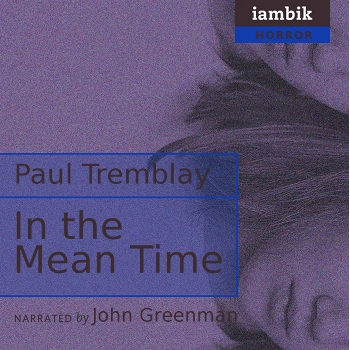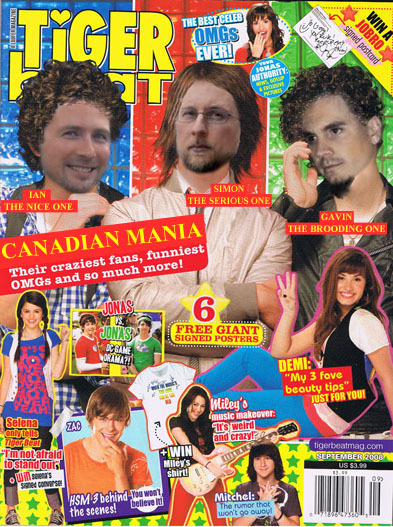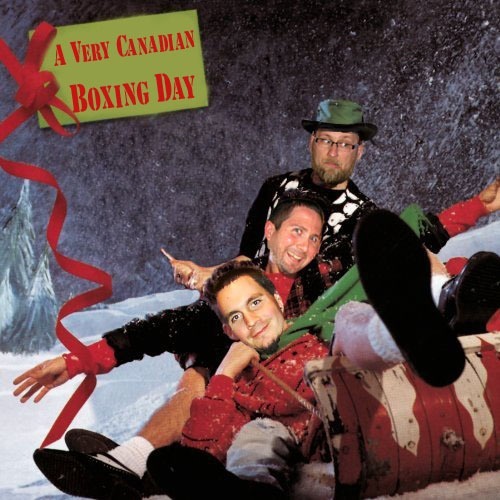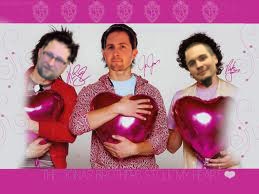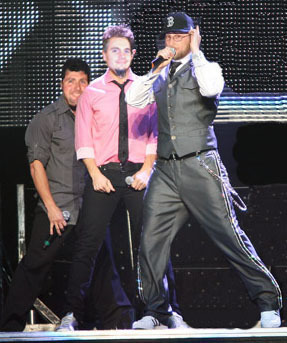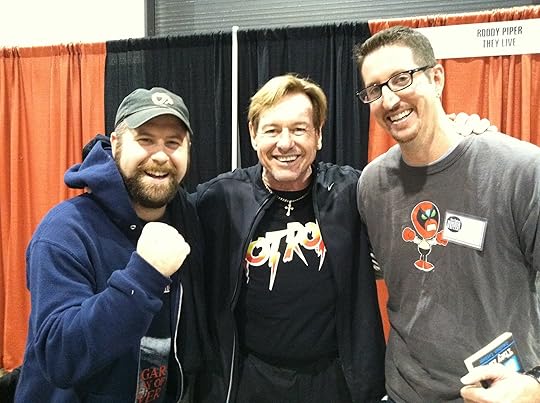Paul Tremblay's Blog, page 12
January 10, 2012
The Atavist
Last month I saw journalist turned boutique publisher Evan Ratliff give a live talk/presentation of his impressive new venture The Atavist:
So, yeah, long form non-fiction published digitally. The hook (besides well-written, well-researched, thoughtful pieces) is–if you have an iPhone, iPod touch, iPad–their unique digital platform. The multi-media that accompanies each piece truly enhances the stories. Embedded pop-ups include maps, personality histories, side bars, audio clips, images related to the story, video, and on and on. Watch the youtube video below for a demo. It's impressive stuff, and for the first time, I feel like I'm seeing digital reading taking full advantage of the medium's possibilities. (The publisher app is free, then each story costs $2.99 ; you chose whether or not to purchase)
Thus far, I've read Lifted, a story about an elaborate government bank heist in Sweeden (the story includes, as it's stunning prologue, actual surveillance footage from the break in–clips included in the youtube clip below) and Baghdad Country Club (animated prologue included below), a story about a bar set up in the Green Zone during the height of the Iraq war.










January 4, 2012
Audio IN THE MEAN TIME now available
The title says it all folks. Order through iambik, narrated by John Greenman (and he does a great job, if I do say so myself)








December 30, 2011
My fav reads of 2011
Despite (or maybe because of) the turmoil in publishing, you stubborn, snot-nosed, recalcitrant writers keep producing amazing work! Huzzah to you all.
This year I managed to read 85 books (yeah, number-geek keeps track of such things). Not all of them published in 2011, but a large chunk of those books were published in 2011. Anyway, here's a bunch of that chunk. (Bunch of the Chunk is my new band name)
Favorites:
The Sister Brothers by Patrick deWitt: My favorite novel of the year. deWitt's quirky, well-mannered western about Eli and Charlie Sister, a pair of assassin brothers (Charlie is much more drawn to the blood and violence than introspective Eli). The novel's voice is pitch-perfect, and it's about the unexpected humor and melancholy of the dusty road of existence.
Green River Killer: A true detective story by Jeff Jensen: A true crime/biography graphic novel. Yes, that's what it is. Jensen is the son of the Seattle detective who spent decades working on the Green River Killer case. The book tells his father's story, one in which his devoting to his family and to finding a serial killer gets all mixed up, particularly when he tries to find meaning in it all. Compelling book.
The End of Everything by Megan Abbott: She's fast becoming a favorite author of mine. It's Reagan-era 80s and thirteen year old Lizzie's best friend has just gone missing. It's a first person account (from Lizzie's POV) and a memorable one…. (more here)
The Family Fang by Kevin Wilson: This is Wilson's first novel (he previously published the fantastic short story collection TUNNELING TO THE CENTER OF THE EARTH), and it more than lives up to the promise of his stellar short fiction…. (more here)
Shock Value by Jason Zinoman: My favorite non-fiction book of the year. Zinoman details the move away from the goofy, safe horror films of the 50s and 60s to the mix of exploitation, confrontation, and art of the late 60s and 70s…. (more here)
Mechanique by Genevieve Valentine: The circus troup Tresulti (complete with strong man, aerialists, and more, including them once having a winged-man) travels a war-ravaged landscape, their shows equal parts beauty, wonder, menace, and unease…. (more here)
Swamplandia by Karen Russell: This novel has garnered considerable buzz, and I'm happy to say the buzz is warranted. Swamplandia is an alligator-wrestling theme park run by the Bigtree family. Ava, the 13 year old daughter, tells most of the tale, as the park and her family disintegrates around her…. (more here)
Pym by Mat Johnson: Part biting social and racial commentary, part satire/comedy, part adventure/horror story, part academic treatise, PYM is an utterly original novel…. (more here)
Emily, Alone by Stewart O'Nan: O'Nan further cements his status as one of our greatest living novelists. The story follows widowed, 80 year-old Emily Maxwell (the matriarch of his earlier novel, WISH YOU WERE HERE) through a year in her life, living alone in Pittsburgh…. (more here)
1Q84 by Haruki Murakami: At 980 pages (in a smallish font), this is the epic's epic. Murakami's imagination is matched only by his ability to make the huge cast of characters come to life and make you care about what happens to them. Aomame and Tengo's love story is big enough for the multiple worlds they inhabit within the novel.
You Think That's Bad by Jim Shepard: My favorite short story collection of the year. Shepard's genius is in the details; how he gives enough to the reader–never overwhelms us with info–to breathe life into his amazing characters…. (more here)
Most disappointing reads of 2011
Miss Peregrine's Home for Peculiar Children








December 21, 2011
4 LA books
So, to follow up and tie a bow on my trip out to the desert, I didn't bring back any scorpions or hantavirus with me. But I did bring back four LA/deserty books! And they were all fantastic.
David Ulin's The Myth of Solid Ground: Earthquakes, Prediction, and the Fault Line Between Faith and Reason: Of course, scardey cat that I am, I waited until I was back on my home turf in the East coast to read about earthquakes and how the denizens of California deal with it. Going into the book, I was a person who knew next to nothing about earthquakes and how effectively (or ineffectively) we're able to predict when/where they will strike. So imagine my alarm, control-freak that I am, when I found that we still suck at predicting earthquakes and that so many people are still drawn to pseudo-science and predicting earthquakes by headache or cloud shape. Ulin and scientists argue that part of the reason why predicting earthquakes is so difficult is that geological time/age is so vast and dwarfs our own time, it's seemingly impossible to set our clocks to run together. Get it? Well, David explains it much better than I do. And, even better, he doesn't explain everything. I was drawn to David's sense of wonder in the face of disaster, in the face of the infinite. Ultimately, we don't know if we're ever safe, but that's okay too.
Mark Haskell Smith's Moist: I don't know if there's another writer who's quite like Mark. Having read Salty and Baked, Mark's novels manage to be very funny, yet dark, gritty, and oftentimes, uncomfortable at the same time. Moist's hero is Bob, who works at a LA pathology lab. A severed arm (though no body) arrives in the lab, and Bob falls in love with one of the arm's erotic tattoos. Or, he falls in love with the tattoo woman. From there the wild plot spins off into dealings with the Mexican Mafia, a masturbation coach with a gun fetish, a luxury car with a nightmarish alarm system (in which, Mark uses Checkov's gun to nasty perfection), with a whole host of wild, funny, and at times, heartbreaking characters. Moist is a funny, ribald, smart, dark, and an expertly plotted crime novel that really can only be compared to Mark's other very fine novels. So there you go. Read 'em all.
Rob Roberge's Working Backwards from the Worst Moment of My Life: This is a short, gut-punch of a collection of stories about down-and-outers. Fans of the short fiction of Donald Ray Pollock and Craig Davidson must read this book of stories mainly set in the southwest. Hell, fans of excellent, dark short fiction should read this book. Rob is a lean, mean stylist who doesn't scrimp on the important details and doesn't blink or look away from the warts on his characters; and the result is as oddly beautiful as it is disturbing. Favorite stories include "The Exterminator" (a story about a purposefully inept pest exterminator and his existential crisis while battling a rat in a bathroom); "Love and Hope and Sex and Dreams" (a man on disability, with one dead arm, trying to salvage his marriage and his life); and the awe inspiring "Burn Ward," which is essentially a conversation between two members of a burn ward, one of whom will be leaving soon, one who won't, that is as heartbreaking as they come.
Tod Golderber's Other Resort Cities: Like Rob's collection, Tod's stories also take place in the southwest and concern themselves with forgotten, damaged characters. Tod mixes more humor with the pathos, but never at the expense of his characters, who are complex and real and treated with dignity. Empathy is the lofty goal in these stories, and he succeeds. (Other Resort Cities has a blurb from Daniel Woodrell that's well-earned and apt.) Favorite stories include "Mitzvah" (a former wiseguy from Chicago is getting sick of hiding out near Vegas, while pretending to be a rabbi. Funny, disturbing, and touching) and "Granite City" (the old sheriff finds a family buried in the snow and hacked to pieces, and instead of the who-dunnit-thriller approach, Tod builds a creeping, quiet story about grief. The two heartbreaking stars of the collection–"Palm Springs" and "Other Resort Cities"–concern the same charcters: Tania (a forty-year-old cocktail waitress with enough regret and recrimination to fill a lake basin) and her spontaneous decision to adopt a 12 year old girl from Russian, Natalya.








December 12, 2011
There was some horror in the desert, they say
Last Sunday, Dec. 4th I flew out to Palm Springs, CA to be a guest faculty lecturer at the UC Riverside MFA program. Tod Goldberg (writer, uber-blogger, man about town, and director of the Palm Desert MFA program) kindly extended me the invite to talk about something related to speculative fiction. He gently talked me out of doing a "The Jetsons: Where the #$%& is my hover car, and will dogs really communicate after the singularity" lecture.
My flight out was so-so (to quote McClusky: "I'm fearful, I'm fearful, I'm fearful of flying, and flying is fearful of me"). I white-knuckled it to Phoenix, then a puddle jumper from Phoenix to Palm Springs. Clearly concerned how this northeasterner would take to desert temps, my hosts considerate hosts in Palm Springs used their weather machine to ensure that the highs would only be high 50s to low 60s, with temps dropping to the low 40s at night. It was like I never left abnormally-warm-for-December Boston.
After getting in to the Riviera, I spent a few hours relaxing with other MFA faculty: Mark Haskell Smith, David Ulin, and Rob Roberge. They made fun of my accent and called me "Cactus Flower" the entirety of my stay. Wait, that didn't happen at all. Actually David, Mark, Tod, and Rob are extremely talented writers/teachers that I admire, as well as generous, smart, and endlessly entertaining folks. The jerks.
The next morning (Monday), 9am, was my real lecture: "How to Write Literary Horror that Doesn't Suck." Despite my not being as handsome (as John Langan often points out to me) as last year's guest lecturer Stephen Graham Jones, my lecture was well-attended, there were lots of questions, and no tomato throwing at me. Using Yeah, Yeah, Yeahs "Heads Will Roll" video during my lecture helped.
The two pics below were taken Maggie Downs.
Post-lecture I chatted horror with Maggie, Julia Watson, Ross, and many more folks. It kind of felt like I was at Readercon! Except more deserty.
After a quick lunch, the students met with their teachers/advisors for 3 hr. long workshops, and I took a walk to downtown Palm Springs.
I met Mark and his class for happy hour in the Riveria, where there was more talk of horror and speculative fiction in general. Later was dinner and more hanging out at the bar with Mark and David.
Tuesday, after taking in a morning lecture breaking down Woodrell's first chapter of WINTER'S BONE, Mark let me borrow his car (the fool!), and after joy riding and jumping sand dunes, I parked at the base of Mount San Jacinto (which was only 10 minutes away from the hotel) and took a tram up it's 8000 feet. Amazing. There were 3 inches of snow at the top, and apparently (no one told me before I decided to take a 2 mile hike on one of the mountain paths by myself) hungry mountain lions lying in wait. Pics:
Post-mountain, I saw Even Ratliff present his new long-form journalism publishing venture THE ATAVIST. I was blown away and plan to do a full blog post about the ground-breaking work his publishing company is doing.
Then, my last night there, I accompanied Mark, David, Tod, Rob, and the rest of the MFA faculty to dinner at the hotel they'll be moving to for June's residency. After dinner, I wound up in Tod's room arguing 80s/90s hoops with Rob. We were both right.
Up the next morning at 5am for a day's worth of turbulent flights. I managed to finish the last 300 pages of 1Q84, though!
Besides having a boatload of fun and spending time with people who I wished lived closer to me, I came away totally impressed with the Palm Desert MFA program. Here's a program that not only welcomes genre writing, but teaches it; embracing both imagination and good writing, along with an impressive focus on the practical side of publishing. I talked to a ton of students and they were all excited, challenged, engaged, and yeah, happy. If you have an interest in genre fiction and are thinking about going for your MFA, I couldn't recommend the Palm Desert program any more highly.
Yes, I said highly.








October 31, 2011
The Colour out of Glitter: The Rise and Fall and Rise of Canadian Horror's first boy band
An expose by Laird Barron, Kurt Dinan, John Langan, and Paul Tremblay
The winds of change do not blow from random places; they blow mightily from Toronto, Canada.
In July of 2009, when there were only dark whispers and rumblings of a sleeping giant, one poised to take the pop music world by storm, three seemingly unassuming young men from up there in Canadia, somehow made it to Readercon, the conference of imaginative literature in Burlington, MA. Richard Gavin, Ian Rogers, and Simon Strantzas made an impression on the attendees as thoughtful enthusiasts of horror fiction and passionate fans of the musical oeuvre of NSYNC and Backstreet Boys. Two weeks after their very low key but important penetration of the American border, their hurriedly pressed EP Tundra: Three Canadian Chillers was released. The hit "Omens" took the music world by surprise. While the synthetic beats and Splenda-sweet melodies were not ground breaking, it was the moody, gothic lyric "the darkly splendid realm" sung in a delicious falsetto by Richard Gavin that enchanted listeners. Their unexpected overnight success took an early toll on Gavin in particular, as he turned to religion to cope with the newfound stress and expectations. Reportedly, Gavin attempted to meld aspects of Kabala, Pentacostalism (mainly the rattlesnake handling), Norwegian Death Metal, and Howard Philip Lovecraft's Cthulhu mythos into his own concoction he termed Strantzasism. Rogers and Strantzas had difficulty with Gavin's newfound and scattershot fervor. Heedless of the warning signs of the problems that would germinate from beneath the surface, The Colour Out of Glitter (or CO0G) began to work on their smash follow-up, A Very Canadian Boxing Day.
A Very Canadian Boxing Day proved a wild success in Canada, dominating the local college radio airwaves for sixteen weeks and achieving a measure of popularity in the United States, cementing the band's status as pop godlings in the making. But it was this very international stardom that would prove the undoing of COoG. The trouble began innocently enough, as these things often do. Simon Strantzas was energized by the rabid support of COoG's two fans from the US, Paul Tremblay and John Langan, both of whom sent countless fan letters. Strantzas, dedicated champion of the people as he was, insisted upon personally answering each and every letter, which numbered in the scores weekly. Ian Rogers knew something was amiss when he noted that Strantzas licked each and every return envelope and stamp despite the fact they were of the self-adhesive variety. Strantzas was addicted to more than love — his passion for adhesives would soon spiral out of control and led to grave consequences that would threaten to rip the band apart. Bad as matters were, however, the worst was yet to come.
Strantzas's increasing battle with adhesive-addiction, coupled with Gavin's sudden decision to spend three months pursuing a therapeutic cleansing via bran and pig's blood at a monastery in the Carpathian Mountains, led to Ian Rogers being thrust into leadership of the band. Before Strantzas and Gavin had departed for the Betty Ford Center and Romania, respectively, each had laid down rough vocal tracks for what was to be the band's next album, a collection of covers of classic love songs whose working title was Valentine's Day Three Ways. When Rogers had seen each of his bandmates off at the airport, he had reassured them that he would not, as he put it, "bollocks things up." Left to his own devices, however, Rogers decided to abandon this project in favor of something far more complex, a Valentine's Day concept album which would tell the story of Felix Renn; a lonely private investigator's quest for love in a city filled with monsters and bacon. Rogers blended Stranzas's moving cover of Bon Jovi's "Runaway" (which he oddly renamed "Cold to the Touch") with Gavin's tender homage to Blue Oyster Cult's "Godzilla," adding his own, polka-inspired take on The Bay City Rollers' "Saturday Night" to the mix and setting it all to a sampling of Donna Summer's Greates Hits. The resulting album, Johnson for Hire, would consist of this thirty-eight and a half minute song, whose title, "Everything I Do" (Love Theme from Robin Hood: Prince of Thieves), would lead to a fist-fight between Rogers and Bryan Adams when the two bumped into one another at that year's Canadian Music Awards, held at the downtown Toronto Sizzler. And though Rogers would claim his title had nothing to do with Adams's mega-hit, and that the copies of the album with Adams's face on the cover were the result of a mix-up he had nothing to do with, it was clear that, in his hands, what had been Canadia's latest entry into the world of pre-fab post-adolescent pop was in jeopardy.
Newly-released from his stay at Betty Ford, Simon Strantzas launched an ambitious plan to restore the fortunes of the band that, as he had put it, had allowed him to move into a house with a solid-gold toilet bowl. Together with Richard Gavin, rejuvenated by three months of relentless bran, he set up and booked a tour whose focus on the group's earlier, more audience-friendly catalogue would re-establish their bond with the two groups of fans who had made them what they were: lonely, middle-aged men whose pretensions to literary grandeur had long ago been ground to dust by a cruel and indifferent marketplace, and soccer moms. Although initially sluggish, ticket sales for the "The Colour Out of Glitter: It's the U That Makes Us Canadian (And Not British. Really.)" tour picked up dramatically after the group's surprise performance at Mr. Sub's "Buy One, Get One Half-Price" promotion. Ian Rogers, though, was not happy with the new-old course the band was following, and once again, his taste for violence would get the better of him. When he overheard veteran Canadian folksinger Gordon Lightfoot questioning the band's prospects while waiting for takeout at the Friendly Thai restaurant, Rogers leapt on the man with his full measure of fury. And though Rogers would subsequently receive almost half a dozen get well cards from his mother during his recovery at Toronto General Hospital, the delay his broken jaw, dislocated shoulders, ruptured spleen, and shattered knees threatened the tour with forced Strantzas and Gavin to a stern response. They publically suspended Rogers from the band, replacing him with Corey Hart for the remainder of the tour. To make matters worse for Rogers, he was the subject of a lawsuit by the Friendly Thai restaurant, which claimed that his actions had made their name a lie and forced them to change it "The Mostly Friendly Thai Restaurant." Together with the reggae-inflected cover of "Sunglasses at Night" Strantzas and Gavin recorded with Hart, which scored unexpected success on the elevator-music circuit, it was looking as if The Colour Out of Glitter might have lost its R.
It was during this time that Rogers had a meeting that would change his life, and ultimately, bring the original The Colour Out of Glitter roaring back to life. While picking up a jalapeno and pineapple crepe at Crepes a Gogo, Rogers felt a hand on his shoulder and turned to see the grizzled face of Laird Barron smiling at him. Having heard of his old acolyte's troubles, Barron had leashed a team of half-rabid coyotes to an old bed frame and lashed them all the way to Canadia to deliver to Rogers a message that would steer him away from the cliff he was speeding towards: "Ian: cool it." Newly-empowered and -inspired by Barron's trenchant advice, Rogers steered his two-wheel segway out into the August snow and set off in search of the two men with whom he'd once shared such intimacy. As it turned out, Strantzas and Gavin were ready for his return: while initially happy for any measure of publicity, Corey Hart had become increasingly demanding, insisting that, for their next album, the group should release an album of German bratwurst songs. When Strantzas and Gavin saw Rogers reappear in the doorway of Strantzas's mother's basement, tears in his eyes, all was forgiven, and Hart was tossed out into the night, without his sunglasses.
So now, with a new lease on musical life The Colour Out of Glitter is back, headlining Buger King's "The King Isn't THAT Creepy" tour, working on their next album, It's Still the Eighties in Canadia, and ready for whatever life has in store for them.
(Happy Halloween!)








October 27, 2011
Re-enactment (of sorts) of Mark Genevich's bridge ride!
While the ride of Genevich is not as historically important (and has yet to be misappropriated by Sarah Palin) as Paul Revere's midnight ride, Filmmaker and fan of THE LITTLE SLEEP Marc Colucci took a scary drive over Mark Genevich's favorite bridge: the Sagamore. You know, one of the two bridges that spans the Cape Cod Canal, connecting mainland Massachusettes to the sand, surf, and mini-golf on the Cape? That bridge that rises into the clouds, has no median and anorexic thin double lanes? Yeah, that bridge.
So, yeah, Marc Colucci doesn't have narcolepsy, and he didn't drive over the bridge at night, and he didn't have any secret film to transport. But he did ride over the bridge on a small scooter. The thought of it makes my knees wobble.








October 24, 2011
Speculative Fiction Fest at Brown U Bookstore…and me!
Click here for a full pdf schedule of the weekend.
I'll be reading alongside Laird Barron and John Langan on Saturday, October 29th, from 5pm to 7pm, roughly, with a reception to follow. We'll be promoting Creatures, Supernatural Noir (an anthology that includes a story from each us) and our various other books.
Come to Providence for the readings, stay for the Cthulhu.








October 16, 2011
Me being a fanboy with Roddy Piper!
Taking a break from the fun at the Creatures blog to document my geeking out at Rock 'n Shock this weekend.
This child of the 80s was once obsessed with professional wrestling. Or to be more specific, one Rowdy Roddy Piper. He was a 'bad guy' and really, the bad guys were always the more intelligent, more interesting, more fun. If all he ever did was Piper's Pit (where he interviewed other bad guys or ambushed the good guys with chairs and his microphone), we'd be more than cool. But Piper's crowning achievement, in my fanboy eyes, was his starring role in THEY LIVE.
He was in Worcester this weekend, and didn't cancel on his appearance despite a broken neck (broken, according to more than one event organizer). He wore a bulky neck brace for most of the weekend, and the trooper that he is, he still gave time to everyone who asked. I had him sign my copy of Jonathan Lethem's long-form essay THEY LIVE:
This was the first Piper had seen or heard of the book and he seemed genuinely interested in it, flipping through the pages, asking who wrote it, where he could find it, etc.
Then my brother and I mugged for the camera with him. His arms around our shoulders, my brother Dan said, "Piper's Pit, baby!" and Roddy growled through a giant smile, "Oh, they hated us back then, didn't they?", and we all laughed. It was kinda sad, awesome, and perfect all at the same time.






 [image error]
[image error]
Me being a fan boy with Roddy Piper!
Taking a break from the fun at the Creatures blog to document my geeking out at Rock 'n Shock this weekend.
This child of the 80s was once obsessed with professional wrestling. Or to be more specific, one Rowdy Roddy Piper. He was a 'bad guy' and really, they were always the more intelligent, more interesting, more fun. If all he ever did was Piper's Pit (that was were he interviewed other bad guys or hit the good guys with chairs on a mock interview area), we'd be more than cool. But Piper's crowning achievement, in my fan-boy eyes, was his starring role in THEY LIVE.
He was in Worcester this weekend, and didn't cancel on his appearance despite a broken neck (broken, according to more than one event organizer). He wore a bulky looking neck brace for most of the weekend, and the trooper that he is, he gave time to everyone who asked. I had him sign my copy of Lethem's long-form essay THEY LIVE:
This was the first he'd seen or heard of the book and seemed genuinely interested in it, flipping through the pages, asking who wrote it, where he could find, etc.
Then my brother and I mugged for the camera with him. His arms around our shoulders, my brother Dan said, "Piper's Pit, baby!" and Roddy growled through a giant smile, "Oh, they hated us back then, didn't they?", and we all laughed. It was kinda sad, awesome, and perfect all at the same time.






 [image error]
[image error]

